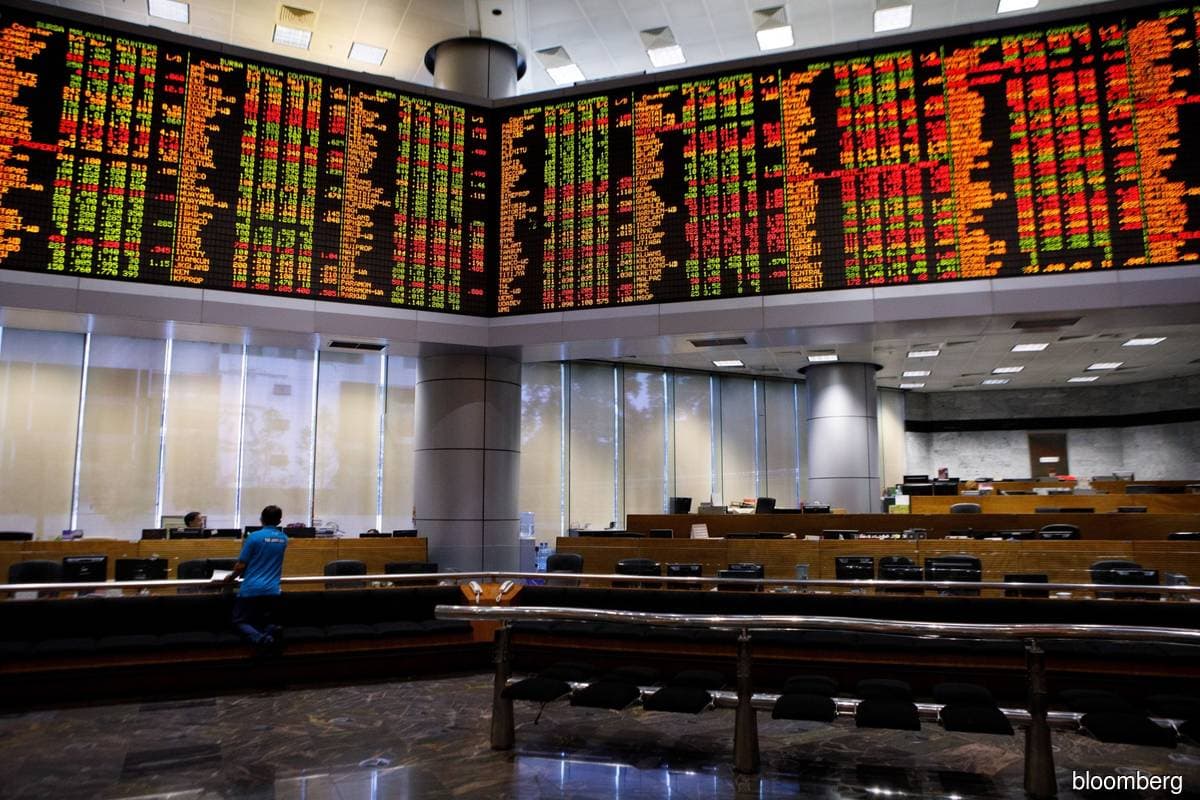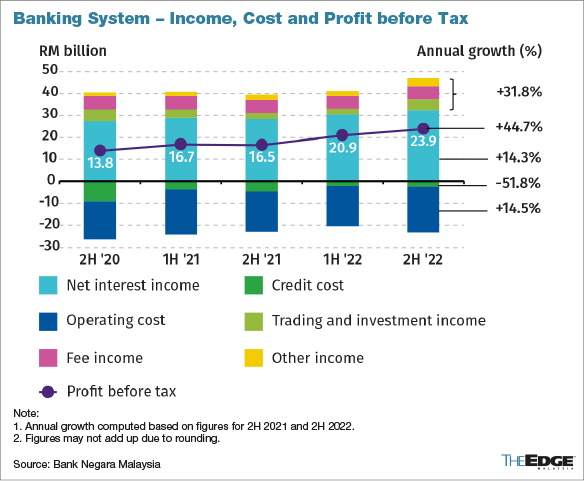
KUALA LUMPUR (March 29): While market valuations of listed banks in Malaysia rose in the second half of last year (2H2022), they have not fully recovered to pre-pandemic levels, according to Bank Negara Malaysia (BNM).
In its Financial Stability Review report for 2H2022, BNM said this reflects investor concerns over lingering uncertainties in the operating environment for banks in 2023.
As at December 2022, banks' average price-to-book (P/B) ratio trended higher to 0.9 times, from 0.8 times as at June 2022. The average price-earnings (P/E) ratio was also higher at 12.2 times, from 11 times previously.
However, these valuations were still lower than the average P/B ratio of 1.1 times and P/E ratio of 11.5 times between 2015 and 2019.
Going forward, the central bank expects financial market volatility to remain elevated, and could continue to weigh on banks’ trading and investment income, although current market risk management strategies by banks point to a modest impact on profitability.
Looking back, trading and investment income provided some support to banks’ profits in 2H2022, despite increased global market volatility during the period.
Active risk management by banks and market optimism following a slowdown in the pace of tightening by the US Federal Reserve led to an improvement in banks’ trading and investment income (2H2022: +RM5.1 billion; 1H2022: +RM2.8 billion).
The decline in domestic bond yields in the last two months of 2022, coupled with a stronger ringgit in the last quarter, saw banks record gains from their fixed income and foreign exchange portfolios, according to the report.
Meanwhile, the central bank said banks’ holdings of government bonds had increased since the onset of the Covid-19 pandemic (December 2022: 9.9% of banking system total assets; December 2021: 9.4%; 2015-2019 average: 6.8%), exposing banks to higher interest rate risks.
However, banks continued to monitor these risks carefully to ensure they remain within their internal risk appetite.
Of late, a larger share (December 2022: 35.4%; December 2021: 31.8%; 2015-2019 average: 25.2%) of government bonds held by banks was recorded at amortised cost. This reduced fluctuations in banks’ capital positions in an environment of rising interest rates.
BNM added that the high capital buffers of banks also continued to preserve their ability to absorb any realised mark-to-market losses from this portfolio.
Don't miss the other highlights of the BNM Annual Report 2022. Read the articles here.

